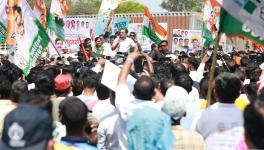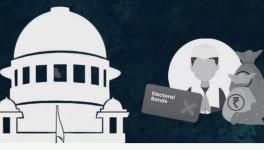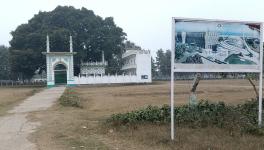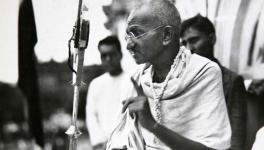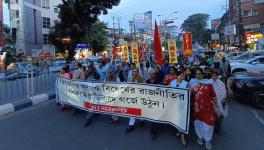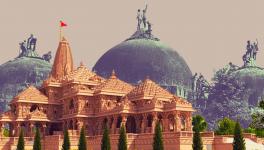History as Myth and Fable as Verdict
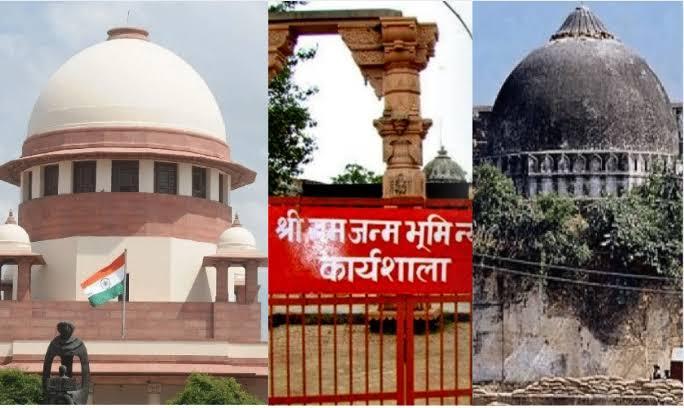
On December 6, 1992, it was not just a mosque but the foundation of a secular, plural republic based on the rule of law that was permanently damaged. Twenty-seven years since then, and 27 days since the Supreme Court order that cleared the way for a Ram temple and awarded Muslim parties a five-acre plot of land in Ayodhya, we are no nearer to either justice or closure.
While review petitions have been filed against the November 9 judgement, they are widely believed to be symbolic efforts to register protest by aggrieved Muslims as well as those who believe the judgement upholds faith and belief over facts and law.
As we await the future of this dispute to unravel, what we could do is enhance our understanding of how a small pilgrim town’s multi-religious history was completely appropriated by a domineering and unethical collusion of religion and politics.
Ayodhya’s identification with the mythical town in the epic Ramayana is a result of developments that are rooted in the history of Vaishnavism and the birth of the Ramanandi Sampraday. It is linked with long-term changes in the politics and society of the subcontinent, and during the last three decades, with the furious and focussed Ram Janmabhoomi campaign of the RSS-VHP-BJP, that transformed the town into the Ground Zero of the battle between communalism and secularism.
Of the millions of gods and goddesses in the Hindu pantheon, how is it that only a couple of prominent ones, Rama and Krishna, have dedicated birthplaces—and that, too, exact spots with specific accuracy that could match NASA’s capabilities? It is a useful ponderable. That both these gods are not full-fledged divinities but, in fact, human incarnations of Vishnu, answers this question partially. Both Rama and Krishna were born as humans to set an out-of-control world in order. Rama was born a prince and Krishna in a cowherd’s family, but both their life stories, through the most fascinating churns and twists of fate, form the sinew and spine of the two epics that Hindus know best, the Ramayana and the Mahabharat.
These glorious epics have transcended time, genre, geography, race, religion and cultures, the Ramayana more than the Mahabharata. But they are not history. They have been retold, and continue to be living epics, still being remodelled and represented in old and new and emerging forms. Their characters have sunk deep into the psyche of a large mass of (not all) Hindus and are used as adjectives to describe traits and qualities. A wily and evil maternal uncle is called a ‘Shakuni’, an unconditional devotee a ‘Shabari’, and a reasonable but disloyal brother, a ‘Vibhishan’. A reunion of long-lost or separated brothers is called ‘Bharat Milap’, a dilemma between the right and the just is described as a ‘dharma yuddha’ and so forth.
The Ramayana, which is much more popular than the Mahabharata or its offshoot, the Bhagvad Gita, has become a Bible of Hindus. Almost every little trivia from the Ramayana—be it a river or a location, a mountain or a forest, a garden or a kingdom—can be found in states across India, and in other countries as well. Its wickedest character, Ravana, remains as alive as Rama, its noblest. The epic has been told in myriad ways, in different religions. According to some estimates, there are at least 300 versions of the Ramayana, and the oldest among them is considered to be Valmiki’s, at least in the Hindu tradition.
The Jaina and the Buddhist Ramayanas, too, date back to the same time period, but in neither tradition does the Ramayana occupy the same revered place as it does for a large number of Hindus. Also, in neither tradition have the stories or characters from the epic been accepted, established and propagated as history, as among the Hindus.
Today, despite the leaps of science to Mars and beyond, the average Hindu, especially in the cow belt, believes in the epic’s tall tales—the abduction of Sita in the Pushpaka Vimana, the bridge of floating stones to ‘Sri Lanka’, the life-giving ‘Sanjeevani booti’, the army of monkeys, Sita’s fire ordeals and her eventual banishment into the forest, the perfect Ram-Rajya and the birth of Rama and his brothers through a massive fire ritual—as he or she would believe actual incidents. This is faith and belief.
Coming to names, the town in today’s Uttar Pradesh is not the only place named “Ayodhya”. Ayodhya is the name of choice for many other places, for instance, the Ajodhya Hills in West Bengal’s Purulia district where, local legend has it, Sita and Rama stayed during their exile. Here, a local pond named after Sita is believed to have originated when Rama shot an arrow into the earth to find water for her to quench her thirst.
Though the British divided India along Hindu-Muslim lines before they left in 1947, the Ajodhia Pur near Lahore survives with its old name. There are other Ayodhyas in India as well, such as the one in Odisha and one near Allahabad. However, there are more towns and villages across the country named after Rama, Lakshmana, Sita, Bharata, Hanumana and other figures from the epic. Google “Rampur”, for instance, and dozens of towns and villages with that name show up. How, then, did we as a country come to believe that the Ayodhya in Uttar Pradesh is the very town mentioned in the epic and its thousands of versions?
Understanding the answer to this question is crucial to understanding how Rama-worship itself evolved since the epic saga was composed over three millennia ago.
Some arguments cited by the Vishva Hindu Parishad (VHP) and the Rashtriya Swayamsevak Sangh (RSS) to claim that Ayodhya-Faizabad is the Ayodhya of the epic are nothing but half-truths, carefully crafted as propaganda, with the intent to demonise India’s Muslim history.
By ordering the construction of a Rama temple, the Supreme Court verdict, that came after more than seven decades of this dispute, has now virtually vindicated the bogus theory that Rama was born exactly under the central dome of the Babri masjid. At the same time, the verdict has demolished many of the spurious claims made by the pro-temple lobby over the years. Here are some of them:
-
Legend that Vikramaditya of Ujjain discovered Ayodhya: The Supreme Court has relied on the “preponderance of probabilities” to decree a Rama temple, but even in its flawed interpretations of oral histories and the Archaeological Survey of India (ASI) report, it has ruled out any connection to one legend which many Hindus believe. According to a myth that is popular in Ayodhya, Rama left for the heavens 9,56,000 years ago, after which Ayodhya became desolate and remained so until Vikramaditya—whose own historicity remains unestablished—found it and revived its glory. Now, consider what the VHP-backed historian Thakur Prasad Verma has written about this particular legend in his book, Ayodhya ka Itihas evam Purattatva, and also in the ASI’s magazine, Purattatva. He says, “Who was this Vikramaditya? Nothing can be said with certitude about him. According to tradition, Vikramaditya was a king of Ujjain in the Gardhabhilla dynasty and who instituted the Hindu calendar known as Vikram Samvat in 57 BCE. There is no evidence of his ever visiting Ayodhya.”
-
11th-century inscription by a Gahadvala king of Kannauj: Rama is identified with Ayodhya as a whole, not merely with a particular spot in town. The Gahadvala king Chandradeva, who was a devotee of Shiva, issued an inscription at the Swargdavar in Ayodhya that mentions several gods, sages, human beings and ancestors, but missing from this list, quite notably, is Rama, thereby underscoring the late arrival of Rama-worship as well as the identification of today’s Ayodhya with that of the epic’s.
-
Ayodhya Mahatmya: The Ayodhya Mahatmya is believed to be a part of the Skanda Purana. The earliest version of this text dates to the 7th century. However, most of its 81,000 verses seem to have been added much after that. This has not deterred pro-temple scholars from citing the Ayodhya Mahatmya of the Skanda Purana as evidence of the ancient origins of Rama worship in Ayodhya. They are inclined to insist on the 7th-century origin of the Skanda Purana as proof of continuous worship of Rama, completely forgetting the dynamic nature of the Puranas, and also ignoring the obvious fact that the Skanda Purana has been undergoing changes since it was first composed. In the Skanda Purana, the Ayodhya Mahatmya is found in the section on Vaishnavism, and deals with the moksha-giving qualities of worshipping Rama at Ayodhya. There has been much quibbling over the dating of the Skanda Purana in the years leading up to the demolition of the Babri masjid in 1992. The SC verdict, for all its flaws—and there are many— refrains from citing such dynamic texts. The Dutch Indologist Hans Bakker has dated the Ayodhya Mahatmya to the close of the 13th century or the beginning of the 14th century. Bakker believes it was then that the Mahatmya was inserted in Skanda Purana, along with Venkatachala Mahatmya (Tirupati), the Badrikasrama Mahatmya (Badrinath) and the Purusottamaksetra Mahatmya (Jagannath Puri).
-
Babur destroyed a Rama temple to build Babri masjid: It remains to be seen whether people’s belief will change after the SC verdict has clearly stated that there is no evidence to conclude that the mosque was built after demolishing a Rama temple. Perhaps such a change can be catalysed if more people knew about Ayodhya’s rich Jaina history. The first notable incident during the early decades of the Sultanate period (11th to 14th centuries) pertains to the destruction of the Jaina temple of Adinath by Mohammad Ghori’s younger brother, Shah Juran. In 1192 CE, Bartuh, one of the last surviving chiefs of the Gahadvala dynasty, mounted a successful resistance and defeated Shah Juran’s large army. Juran today lies buried in an unmarked grave on the premises of the Adinath Jaina temple in Ayodhya’s old quarter.
-
Travellers’ accounts support the Rama-temple theory: The Supreme Court has relied on the accounts of an Austrian priest, Joseph Tiefenthaler, to support its verdict. However, another traveller, the Englishman William Finch, had visited Ayodhya 150 years earlier. Finch noted the many myths, legends and beliefs prevailing in Ayodhya at his time, which establish that Hindus were then worshipping the burial site of Rama’s ashes, and not his birthplace. By the time Tiefenthaler arrived in Ayodhya, sometime between 1766 and 1771, the local priests in Ayodhya were showing him the cradle where Rama was born and the Babri masjid, as a construction with spolia of a Rama temple. This dichotomy between the two travelogues—held to be reliable by the verdict—escaped supreme judicial scrutiny.
-
ASI report proves that a Ram temple existed below the mosque: The ASI’s efforts to excavate the disputed site came under suspicion and criticism from the very beginning. The final report does not mention that a temple, let alone a temple dedicated to Rama, was present at the same site. All it says is that a massive structure existed, over which the Babri masjid had been built.
Valay Singh is a journalist and author of Ayodhya: City of Faith, City of Discord. The views are personal.
Get the latest reports & analysis with people's perspective on Protests, movements & deep analytical videos, discussions of the current affairs in your Telegram app. Subscribe to NewsClick's Telegram channel & get Real-Time updates on stories, as they get published on our website.









